|
Books Should Be Free Loyal Books Free Public Domain Audiobooks & eBook Downloads |
|
|
Books Should Be Free Loyal Books Free Public Domain Audiobooks & eBook Downloads |
|
Top Authors |
|---|
|
Book type:
Sort by:
|
By: Laura Lee Hope and Edward Stratemeyer (1862-1930) | |
|---|---|
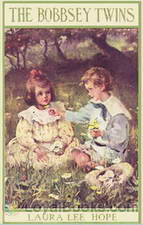 The Bobbsey Twins or Merry Days Indoors and Out
The Bobbsey Twins or Merry Days Indoors and Out
The Bobbsey Twins are the principal characters of what was, for many years, the Stratemeyer Syndicate's longest-running series of children's novels, penned under the pseudonym Laura Lee Hope. The first of 72 books was published in 1904, the last in 1979. The books related the adventures of the children of the middle-class Bobbsey family, which included two sets of fraternal twins: Bert and Nan, who were 12 years old, and Flossie and Freddie, who were six. | |
By: Laura Lee Hope | |
|---|---|
 The Bobbsey Twins at the Seashore
The Bobbsey Twins at the Seashore
In this third volume of the “Bobbsey Twin Series”, the twins – Nan and Bert and Freddie and Flossie – go with their family to visit relatives at the seashore. Excitement and adventure are sure to abound! | |
By: Laura Lee Hope and Lilian C. Garis (1873-1954) | |
|---|---|
 The Bobbsey Twins in the Country
The Bobbsey Twins in the Country
The second book in The Bobbsey Twins series finds the two sets of twins experiencing life in the country during the first part of their summer vacation from school. Their stay with their aunt, uncle and cousins on their farm in Meadow Brook is filled with new adventures for the 'city' Bobbseys. (Introduction by Lee Ann Howlett) | |
By: Laura Lee Hope | |
|---|---|
 Bunny Brown and His Sister Sue
Bunny Brown and His Sister Sue
This book follows the adventures of Bunny Brown, a 6-year old lively little boy, and his Sister Sue, a happy 5-year old little girl. You will enjoy learning of their adorable antics and delightful chatter. The Bunny Brown and His Sister Sue series were published by the Stratemeyer Syndicate from 1916-1930. (Introduction by Abigail Rasmussen) | |
 Bunny Brown and his Sister Sue at Christmas Tree Cove
Bunny Brown and his Sister Sue at Christmas Tree Cove
Bunny Brown and His Sister Sue were featured in a series of 20 books for young children published by the Stratemeyer Syndicate from 1916-1930. In this adventure, first published in 1920, Bunny and Sue lose a valuable possession belonging to their mother. They have many adventures and misadventures during a family boating vacation to Christmas Tree Cove. (Introduction by S. McGaughey) | |
 The Story of a Candy Rabbit
The Story of a Candy Rabbit
The Candy Rabbit wakes up one morning to find his Destiny has arrived: he is part of a wonderful Easter display at the toy shop in which he lives -- and any moment now the customers will arrive! Follow this sweet chap as he has many little adventures, making new friends and catching up with old friends along the way. | |
 Bobbsey Twins at Snow Lodge
Bobbsey Twins at Snow Lodge
The Bobbsey Twins are back at school after summer vacation, but Danny Rugg, the school bully, is up to mischief again--and this time he's trying to pin it onto Bert. Bert gets accused of freezing a giant snowball to the school steps, and all the evidence seems to point against him. Christmas is coming too, and the Bobbsey Twins are busy planning for their trip to Snow Lodge--where a lost treasure, a restored friendship, and exciting adventures await. | |
 Outdoor Girls of Deepdale
Outdoor Girls of Deepdale
The Outdoor Girls of Deepdale was the first book in a long-running series centering around four girls: Betty Nelson, Mollie Billette, Amy Stonington, and Grace Ford. The girls go on many exciting adventures and solve mysteries. In this book the girls go on a long walking tour and in the process find a hundred dollar bill. Who owns the money and why is such a mysterious note attached? (Introduction by Elizabeth Wilcox) | |
By: Thomas Henry Huxley (1825-1895) | |
|---|---|
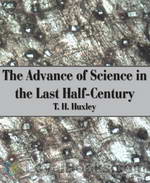 The Advance of Science in the Last Half-Century
The Advance of Science in the Last Half-Century
Thomas H. Huxley, an English biologist and essayist, was an advocate of the theory of evolution and a self-proclaimed agnostic. A talented writer, his essays helped to popularize science in the 19th century, and he is credited with the quote, “Try to learn something about everything and everything about something.” In The Advance of Science in the Last Half Century, he presents a summary of the major developments in Physics, Chemistry and Biology during the period 1839-1889 and their impact on society, within the historical context of philosophical thought and scientific inquiry going back to Aristotle... | |
By: Okakura Kakuzo (1863-1913) | |
|---|---|
 The Book of Tea
The Book of Tea
The Book of Tea was written by Okakura Kakuzo in the early 20th century. It was first published in 1906, and has since been republished many times. – In the book, Kakuzo introduces the term Teaism and how Tea has affected nearly every aspect of Japanese culture, thought, and life. The book is noted to be accessibile to Western audiences because though Kakuzo was born and raised Japanese, he was trained from a young age to speak English; and would speak it all his life, becoming proficient at communicating his thoughts in the Western Mind... | |
By: Alfred Moffat (1866-1950) | |
|---|---|
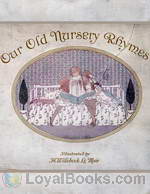 Our Old Nursery Rhymes
Our Old Nursery Rhymes
If you love and cherish old English nursery rhymes and have fond memories of your early childhood years, Our Old Nursery Rhymes by Alfred Moffat published in 1911 is indeed the little book for you! Or as a parent, if you'd like your own children to share the magic, this book provides them all. One of the most appealing aspects of this charming book is that the rhymes are all set to music and if you're musically inclined, you can certainly keep yourself and your children entertained by playing these pretty tunes... | |
By: Mary Mapes Dodge (1831-1905) | |
|---|---|
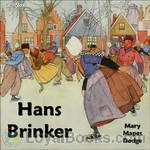 Hans Brinker
Hans Brinker
Mary Mapes Dodge created an instant bestseller with “Hans Brinker or The Silver Skates.” She wanted the book to be partly a book of travels and partly a domestic story. It is a tale written for children that adults also find interesting and uplifting. Dodge writes as if she is sending a series of letters from Holland to children in America, and her you-are-there perspective is aided by a nice attention to detail and vivid imagery.The Brinkers are a poor but stoic family under a dark cloud – Raff, the man of the house, fell from the dikes while reinforcing them during a bad storm, and for ten years he has been in a vegetative state... | |
By: William George Jordan (1864-1928) | |
|---|---|
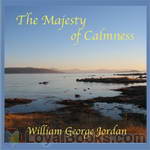 The Majesty of Calmness
The Majesty of Calmness
Change your life by changing your thoughts. The Majesty of Calmness is your guide to attracting prosperity, manifesting opportunities, and managing stress–all while discovering the values most precious to you. | |
By: American Bible Union | |
|---|---|
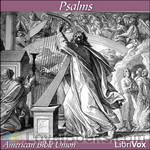 Psalms
Psalms
This 1871 revision of The Psalms by the American Bible Union is based on the “Common Version”, another name for the 1833 revision of the King James Version of The Bible by Noah Webster. | |
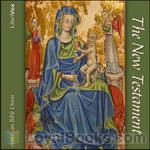 The New Testament
The New Testament
This Revised Testament has been prepared under the auspices of the American Bible Union, by the most competent scholars of the day. No expense has been spared to obtain the oldest translations of the Bible, copies of the ancient manuscripts, and other facilities to make the revision as perfect as possible. The paragraph form has been adopted in preference to the division by verse, which is a modern mode of division, never used in the ancient scriptures. But, for convenience of reference, the numbers of the verses are retained... | |
By: Margery Williams (1881-1944) | |
|---|---|
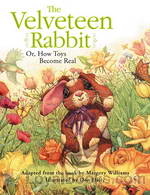 The Velveteen Rabbit
The Velveteen Rabbit
“What is REAL?” asked the Rabbit one day… Written in 1922, The Velveteen Rabbit, or, How Toys Become Real is the tale of a sweet unassuming toy rabbit who questions what it is to live and to love. It was the first children’s title written by Margery Williams (1881 – 1944), who had previously created only for adults. This story eclipsed all others, to become her most famous work, and an ever adored classic for all ages. | |
By: John Ruskin (1819-1900) | |
|---|---|
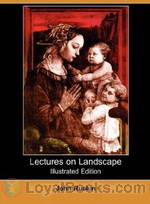 Lectures on Landscape
Lectures on Landscape
A series of lectures on landscape painting delivered at Oxford in 1871, by artist, critic, and social commentator, John Ruskin. | |
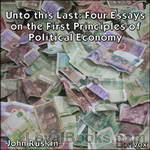 Unto this Last: Four Essays on the First Principles of Political Economy
Unto this Last: Four Essays on the First Principles of Political Economy
John Ruskin (1819 – 1900) is best known for his work as an art critic and social critic, but is remembered as an author, poet and artist as well. Unto This Last is an important work of political economic though that influenced Gandhi, among others. (Hugh McGuire/Wikipedia) | |
 The King of the Golden River
The King of the Golden River
When three brothers mortally offend Mr. Southwest Wind, Esquire, their farm is laid waste and their riches lost. Desperate for money, the brothers become goldsmiths and melt down their remaining treasures . . . only to find that the spirit of the King of the Golden River resides with a molded tankard, and knows the secret of the riches of the Golden River. (Introduction by Xenutia) | |
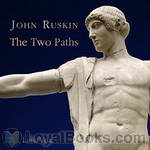 The Two Paths
The Two Paths
"The Two Paths" is a collection of five lectures delivered in 1858 and 1859 by John Ruskin on art and architecture. This is how the author himself presents the book: "The following addresses, though spoken at different times, are intentionally connected in subject; their aim being to set one or two main principles of art in simple light before the general student, and to indicate their practical bearing on modern design. The law which it has been my effort chiefly to illustrate is the dependence of all noble design, in any kind, on the sculpture or painting of Organic Form." The most famous of these, the fifth lecture, is commonly known simply as "The Work of Iron" | |
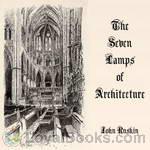 The Seven Lamps of Architecture
The Seven Lamps of Architecture
The Seven Lamps of Architecture, published in May 1849, is an extended essay written by the English art critic and theorist John Ruskin. The 'lamps' of the title are Ruskin's principles of architecture, which he later enlarged upon in the three-volume The Stones of Venice. To an extent, they codified some of the contemporary thinking behind the Gothic Revival. At the time of its publication A.W.N. Pugin and others had already advanced the ideas of the Revival and it was well under way in practice... | |
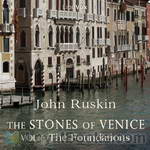 The Stones of Venice, volume 1
The Stones of Venice, volume 1
The Stones of Venice is a three-volume treatise on Venetian art and architecture by English art historian John Ruskin, first published from 1851 to 1853. Intending to prove how the architecture in Venice exemplified the principles he discussed in his earlier work, The Seven Lamps of Architecture, Ruskin examined the city in detail, describing for example over eighty churches. He discusses architecture of Venice's Byzantine, Gothic and Renaissance periods, and provides a general history of the city as well... | |
By: Frederick Marryat (1792-1848) | |
|---|---|
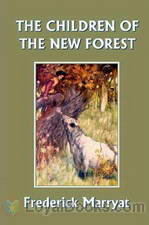 The Children of the New Forest
The Children of the New Forest
The children of Colonel Beverley, a Cavalier officer killed at the Battle of Naseby are believed to have died in the flames when their house, Arnwood, is burned by Roundhead soldiers. However, they escape and are raised by Joseph Armitage, a gamekeeper in his cottage in the New Forest. The story describes how the children adapt from anaristocratic lifestyle to that of simple cottagers. The children are concealed as the grandchildren of Armitage. Eventually after Armitage’s death, Edward Beverley leaves and works as a secretary for the sympathetic Puritan placed in charge of the Royal land in the New Forest... | |
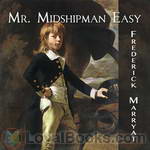 Mr. Midshipman Easy
Mr. Midshipman Easy
One of the first novel-length pieces of nautical fiction, MR. MIDSHIPMAN EASY (1836) is a funny and easygoing account of the adventures of Jack Easy, a son of privilege who joins the Royal Navy. The work begins as a satire on Jack’s attachment to “the rights of man” that may try the listener’s patience. But despair not, for the story soon settles down as the philosophical midshipman begins his many triumphs over bullies, foul weather, and various damned foreigners of murderous intent.Caveat audiens: This novel employs racial/ethnic epithets and religious stereotypes, as well as taking a rather sunny view of supply-side economics... | |
 Jacob Faithful
Jacob Faithful
Rebelling against the career chosen for him by his wealthy family, Frederic Marryat joined the Royal Navy in 1806 at the age of 14. He first served as a midshipman in the 38-gun frigate "HMS Imperieuse" commanded by Lord Cochran, 10th Earl of Dundonald whose real life exploits were used by Marryat in his fiction and which formed the basis for other famous fictional characters like Horatio Hornblower and Jack Aubrey. Having survived more than 50 sea battles and attained the rank of Post Captain, he resigned from the Navy and devoted the rest of his life to writing, drawing a good deal on his distinguished career in the Navy and is now considered the Father of Modern Nautical Fiction... | |
 Snarleyyow
Snarleyyow
This is a quite amusing nautical tale of the British Navy of the around the year 1700. While, as with much early 'humor', it is somewhat heavy-handed, the sympathies of the author are clear and good, and cruelty is often averted by good fortune or background characters. First published under the title 'The Dog Fiend', the primary characters are an evil captain of a cutter and his dog. The dog seems indestructible, as is the poor cabin boy who is the butt of the captain's ill humor, and who often is chewed on by the dog... | |
 Naval Officer, or Scenes in the Life and Adventures of Frank Mildmay
Naval Officer, or Scenes in the Life and Adventures of Frank Mildmay
Marryat was a midshipman under Captain Cochrane and this, his first naval adventure, is considered to be a highly autobiographical telling of his adventures with one of Britain's most famous and daring naval captains. | |
By: John Locke (1632-1704) | |
|---|---|
 Two Treatises of Civil Government
Two Treatises of Civil Government
The Two Treatises of Civil Government is a work of political philosophy published anonymously in 1689 by John Locke. The First Treatise is an extended attack on Sir Robert Filmer’s Patriarcha, which argued for a divinely-ordained, hereditary, absolute monarchy. The more influential Second Treatise outlines a theory of civil society based on natural rights and contract theory. Locke begins by describing the “state of nature,” and goes on to explain the hypothetical rise of property and civilization, asserting that the only legitimate governments are those which have the consent of the people... | |
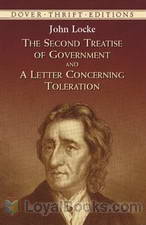 A Letter Concerning Toleration
A Letter Concerning Toleration
Letter Concerning Toleration by John Locke was originally published in 1689. Its initial publication was in Latin, though it was immediately translated into other languages. In this “letter” addressed to an anonymous “Honored Sir” (actually Locke’s close friend Philip von Limborch, who published it without Locke’s knowledge) Locke argues for a new understanding of the relationship between religion and government. One of the founders of Empiricism, Locke develops a philosophy that is contrary to the one expressed by Thomas Hobbes in Leviathan, primarily because it supports toleration for various Christian denominations... | |
By: John Locke (1632-1704) | |
|---|---|
 Essay Concerning Humane Understanding
Essay Concerning Humane Understanding
John Locke's essays on human understanding answers the question “What gives rise to ideas in our minds?”. In the first book Locke refutes the notion of innate ideas and argues against a number of propositions that rationalists offer as universally accepted truth. In the second book Locke elaborates the role played by sensation, reflection, perception and retention in giving rise to simple ideas. Then he elaborates on how different modes, substances and relations of simple ideas (of the same kind) give rise to complex ideas v... | |
By: M. B. Synge (d.1939) | |
|---|---|
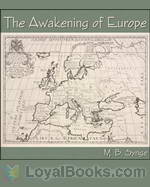 The Awakening of Europe
The Awakening of Europe
The Awakening of Europe by M. B. Synge is the third book in the series, Story of the World. Included in this history is a myriad of interesting men, women, and events that shaped Europe during the years 1520-1745. | |
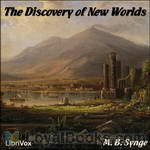 The Discovery of New Worlds
The Discovery of New Worlds
This is the second volume in the series, The Story of the World, which covers the period of history from the rise of Rome to the Conquest of Peru. Along the way, passing through the Dark Ages, going on the Crusades, and exploring the unknown world with the brave men who had the courage to travel unknown seas. Also featured is the destruction of Pompeii and the invention of the Printing Press, along with many other interesting happenings of history during this time period. | |
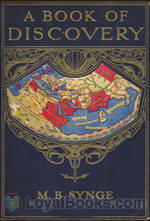 A Book of Discovery
A Book of Discovery
Telling the history of geographical discoveries, "Book of Discovery" is a record of splendid endurance, of hardships bravely borne, of silent toil, of courage and resolution unequalled in the annals of mankind, of self-sacrifice unrivalled and faithful lives laid ungrudgingly down. Of the many who went forth, the few only attained. It is of these few that this book tells. (From the Preface of the book). | |
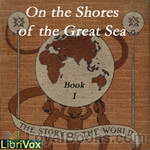 On the Shores of the Great Sea
On the Shores of the Great Sea
Book I of the "Story of the World" series. Focuses on the civilizations surrounding the Mediterranean Sea from the time of Abraham to the birth of Christ. Brief histories of the Ancient Israelites, Phoenicians, Egyptians, Scythians, Persians, Greeks, and Romans are given, concluding with the conquest of the entire Mediterranean by Rome. Important myths and legends that preceded recorded history are also related. Ages 9-18 | |
By: Epictetus (c.55-135) | |
|---|---|
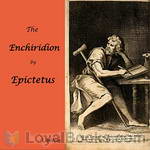 The Enchiridion
The Enchiridion
Epictetus (Greek: Επίκτητος; c.55–c.135) was a Greek Stoic philosopher. The name given by his parents, if one was given, is not known – the word epiktetos in Greek simply means “acquired.” Epictetus spent his youth as a slave in Rome to Epaphroditos, a very wealthy freedman of Nero. Even as a slave, Epictetus used his time productively, studying Stoic Philosophy under Musonius Rufus. He was eventually freed and lived a relatively hard life in ill health in Rome. So far as is known, Epictetus himself wrote nothing... | |
 The Golden Sayings of Epictetus
The Golden Sayings of Epictetus
Aphorisms from the Stoic Greek. | |
By: Arthur B. Reeve | |
|---|---|
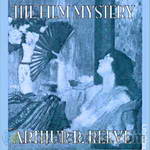 The Film Mystery
The Film Mystery
The Film Mystery is one of eighteen detective novels by Arthur B. Reeve starring his best known character Professor Craig Kennedy and his trusty sidekick Walter Jameson, a newspaper reporter. The pair bears an unmistakable resemblance to the more famous British master sleuth and his doctor friend. The setting of this mystery is the early days of movie making, and the murder victim is Stella Lamar, “the beautiful idol of the screen, beloved of millions”, who collapses and dies during the filming of a scene for her latest movie. | |
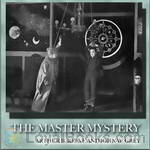 The Master Mystery
The Master Mystery
While Harry Houdini didn’t rise to fame as a screen actor, silent film makers of the day sought to capitalize on his fame. The Master Mystery was Houdini’s first such attempt, and it was embraced by the viewing public, leading to other screen roles following. The hero (or superhero) is Quentin Locke, scientist, agent of the U.S. Justice Department, and not surprisingly, an escape artist extraordinaire. The Master Mystery follows agent Locke through many pitfalls, in true serial fashion, as he... | |
 The Exploits Of Elaine
The Exploits Of Elaine
The Exploits of Elaine It tells the story of a young woman named Elaine who, with the help of a detective, tries to find the man, known only as “The Clutching Hand”, who murdered her father. (Wikipedia) | |
 The Silent Bullet
The Silent Bullet
The many adventures of Professor Craig Kennedy were chronicled by Arthur B. Reeve (October 15, 1880 - August 9, 1936). Reeve was an American mystery writer who created 82 Craig Kennedy mystery stories. The stories have a very Sherlock Holmes type feel, In fact Kennedy has been referred to as the "American Shelock Holmes". Along with his reporter friend, Walter Jameson, Kennedy solves many crimes and unveils mysteries using science. Each story features a facinating look at life in the early 20th century, and even includes some action along the way. | |
By: Edwin Arlington Robinson (1869-1935) | |
|---|---|
 Man Against the Sky: A Book of Poems
Man Against the Sky: A Book of Poems
This is a volume of later Poetry by the famous American poet Edwin Arlington Robinson. | |
 Three Taverns: A Book of Poems
Three Taverns: A Book of Poems
This is a volume of poems by Edwin Arlington Robinson. This volume contains, among other poems, the famous poems The Valley of the Shadow and Lazarus. | |
By: Myrtle Reed (1874-1911) | |
|---|---|
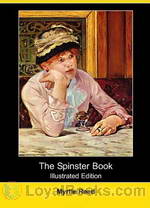 The Spinster Book
The Spinster Book
A cross between guidebook and social commentary, The Spinster Book gives clever and humorous insights on topics such as courting, handling men and women, love letters, marriage and spinsterhood. | |
 Lavender and Old Lace
Lavender and Old Lace
“Jane Hathaway and her niece, Ruth Thorne, have never met. Jane invites Ruth for a visit, but leaves before Ruth comes. Ruth agrees to come to Jane for quiet and rest. When Ruth arrives, the maid gives her a letter from her aunt. In the letter, Aunt Jane does not tell Ruth anything about her trip abroad but insists that Ruth light an oil lamp in the attic each night. Very soon, the all together forgotten past and the steady present are united.” | |
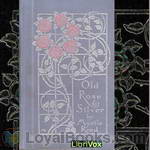 Old Rose and Silver
Old Rose and Silver
The novel follows the lives of Rose and her widowed Aunt, Madame Francesca Bernard, along with young visitor and cousin Isabel, whose lives are changed by the return of an old friend and neighbour Colonel Kent, and his grown son, Allison. Other characters that help shape their lives in significant ways are the Crosby twins, unconventional and uninhibited youths that set society at naught, and an unconventional doctor who specializes in the impossible. Through the limited "wide-scope" descriptions... | |
By: Georg Wilhelm Friedrich Hegel (1770-1831) | |
|---|---|
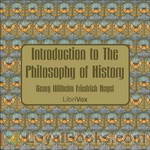 Introduction to The Philosophy of History
Introduction to The Philosophy of History
The introduction to Hegel’s lectures on the philosophy of world history is often used to introduce students to Hegel’s philosophy, in part because Hegel’s sometimes difficult style is muted in the lectures, and he discourses on accessible themes such as world events in order to explain his philosophy. Much of the work is spent defining and characterizing Geist or spirit. Geist is similar to the culture of people, and is constantly reworking itself to keep up with the changes of society, while at the same time working to produce those changes through what Hegel called the “cunning of reason”... | |
By: John H. Haaren and A.B. Poland | |
|---|---|
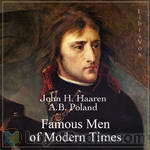 Famous Men of Modern Times
Famous Men of Modern Times
Famous Men of Modern Times is a series of biographical sketches written for the purpose of making the study of history lively and interesting by giving insight into the men who lived during this time. Summary by Laura Caldwell | |
By: Plague Ship (1912-2005) | |
|---|---|
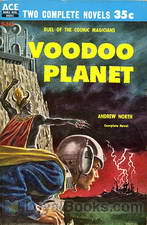 Voodoo Planet
Voodoo Planet
The sequel to Plague Ship, Voodoo Planet finds the Solar Queen banned from trade and starting her supposed quiet two-year stint as an interstellar mail carrier. But instead her crew accepts a visit to the safari planet of Khatka, where they find themselves caught in a battle between the forces of reason and the powers of Khatka’s mind-controlling wizard. | |
By: Delmer Eugene Croft | |
|---|---|
 Supreme Personality
Supreme Personality
Life is self-realization. Every birth is divine. We are born anew every morning. My wish is that you may catch the gleam, be freed from limitations and enter upon your boundless possibilities. To bring you into the throne-room of your being, that you may awaken in self-realization, is why I have prepared this course of lessons. Should you give five minutes a day to them, in a year you will know the joy there is in Life, in Power, and in Service. (from the text) | |
By: Nat Love (1854-1921) | |
|---|---|
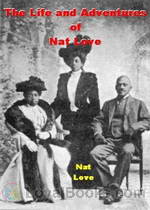 The Life and Adventures of Nat Love, Also Known As Deadwood Dick
The Life and Adventures of Nat Love, Also Known As Deadwood Dick
Nat Love was born a slave, emancipated into abject poverty, grew up riding the range as a cowboy and spent his maturity riding the rails as a Pullman Porter. For me, the most amazing thing about him is that despite the circumstances of his life, which included being owned like a farm animal solely because of the color of his skin and spending later decades living and working as an equal with white coworkers, he was an unrepentant racist! Convinced that the only good Indian was a dead one, and that... | |
By: Fay Inchfawn (1880-1978) | |
|---|---|
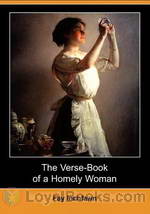 The Verse-Book of a Homely Woman
The Verse-Book of a Homely Woman
Published by the Religious Tract Society in London, The Verse-Book of a Homely Woman is a collection of domestic, spiritual, and fanciful poems from the point of view of a woman, a housewife, and a Christian. The natural, supernatural, and solidly mundane are mixed together as well as separated into two parts: Indoors and Outdoors. | |
By: Frank L. Packard (1877-1942) | |
|---|---|
 The Adventures of Jimmie Dale
The Adventures of Jimmie Dale
Frank Lucius Packard (February 2, 1877 – February 17, 1942) was a Canadian novelist born in Montreal, Quebec. He worked as a civil engineer on the Canadian Pacific Railway. He later wrote a series of mystery novels, the most famous of which featured a character called Jimmie Dale. Jimmie Dale is a wealthy playboy by day, with a Harvard education and membership to New York City’s ultra-exclusive private club St. James. But at night he puts on a costume and becomes The Grey Seal, who enters businesses or homes and cracks safes, always leaving a diamond shaped, grey paper “seal” behind to mark his conquest, but never taking anything... | |
 The White Moll
The White Moll
Frank Lucius Packard (February 2, 1877 – February 17, 1942) born in Montreal, Quebec, was a Canadian novelist. Packard is credited with bridging the gap from the “cozy” style mysteries to the more gritty, hard-boiled style of such writers as Dashiell Hammet and Raymond Chandler. Packard also wrote a series of novels, beginning in 1917, featuring Jimmie Dale. A wealthy playboy by day, at night, Jimmie becomes a crimefighter “The Gray Seal” complete with mask and secret hide-out, “The Sanctuary”... | |
By: Fanny Burney (1752-1840) | |
|---|---|
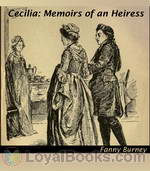 Cecilia: Memoirs of an Heiress
Cecilia: Memoirs of an Heiress
The plot of Cecilia revolves around the heroine, Cecilia Beverley, whose inheritance from her uncle comes with the stipulation that she find a husband who will accept her name. This proves impossible, and she gives up her fortune to marry for love. Jane Austen referred to Cecilia and other novels in her novel, Northanger Abbey: “’And what are you reading, Miss — ?’ ‘Oh! It is only a novel!’ replies the young lady, while she lays down her book with affected indifference, or momentary shame... | |
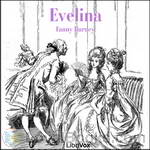 Evelina
Evelina
In this epistolary novel, we find a young woman named Evelina, who was raised in rural seclusion until her eighteenth year because of her uncertain parentage. Through a series of harrowing and humorous events that take place in London and an English resort town, Evelina learns how to navigate the complex layers of 18th century society and earn the love of a distinguished and honorable nobleman. This comedy of manners often satirizes the society in which it is set; Evelina is a significant precursor to later works by Jane Austen and Maria Edgeworth, whose novels explore many of the same issues. (from Evelina’s wikipedia entry, modified by ettelocin) | |
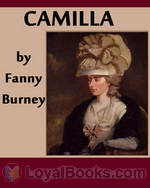 Camilla
Camilla
Camilla is Frances Burney's third novel. It became very popular upon its publication in 1796. Jane Austen referred to it, among other novels, in her novel Northanger Abbey:"'And what are you reading, Miss — ?' 'Oh! It is only a novel!' replies the young lady, while she lays down her book with affected indifference, or momentary shame. 'It is only Cecilia, or Camilla, or Belinda'; or, in short, only some work in which the greatest powers of the mind are displayed, in which the most thorough knowledge of human nature, the happiest delineation of its varieties, the liveliest effusions of wit and humour, are conveyed to the world in the best–chosen language... | |
By: Frances Burney (1752-1840) | |
|---|---|
 The Wanderer
The Wanderer
This is the fourth and final novel by Fanny Burney, the author of Evelina, Cecilia, and Camilla. "Who is "Miss Ellis?" Why did she board a ship from France to England at the beginning of the French revolution? Anyway, the loss of her purse made this strange "wanderer" dependent upon the charity of some good people and, of course, bad ones. But she always comforts herself by reminding herself that it's better than "what might have been..." This is not only a mystery, not at all. It's also a romance which reminds readers of novels by Jane Austen... | |
By: Warren Hilton (1874-?) | |
|---|---|
 Initiative Psychic Energy
Initiative Psychic Energy
Learn how to accomplish your goals through increasing your mental power, avoiding energy drains, and becoming more mentally efficient. | |
By: Elizabeth von Arnim (1866-1941) | |
|---|---|
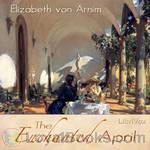 The Enchanted April
The Enchanted April
It’s a dreary February in post-World War I London when Mrs. Wilkins spots an advertisement in The Times for a small Italian castle for rent in April. She sees another member of her women’s club, Mrs. Arbuthnot, reading the same advertisement and manages to convince her that the two of them should rent it. Both are miserable and lonely in their marriages. They can’t afford the cost of the villa, San Salvatore, on their own and must advertise for two others, eventually recruiting an elderly widow named Mrs... | |
 The Princess Priscilla's Fortnight
The Princess Priscilla's Fortnight
The Princess Priscilla of Lothen Kunitz finds court life stifling and runs away to England with the elderly court librarian. Her intention is to live a pure and simple life filled with good works. But life among ordinary people in an English village is not what she expects it to be... (Introduction by Tabithat) | |